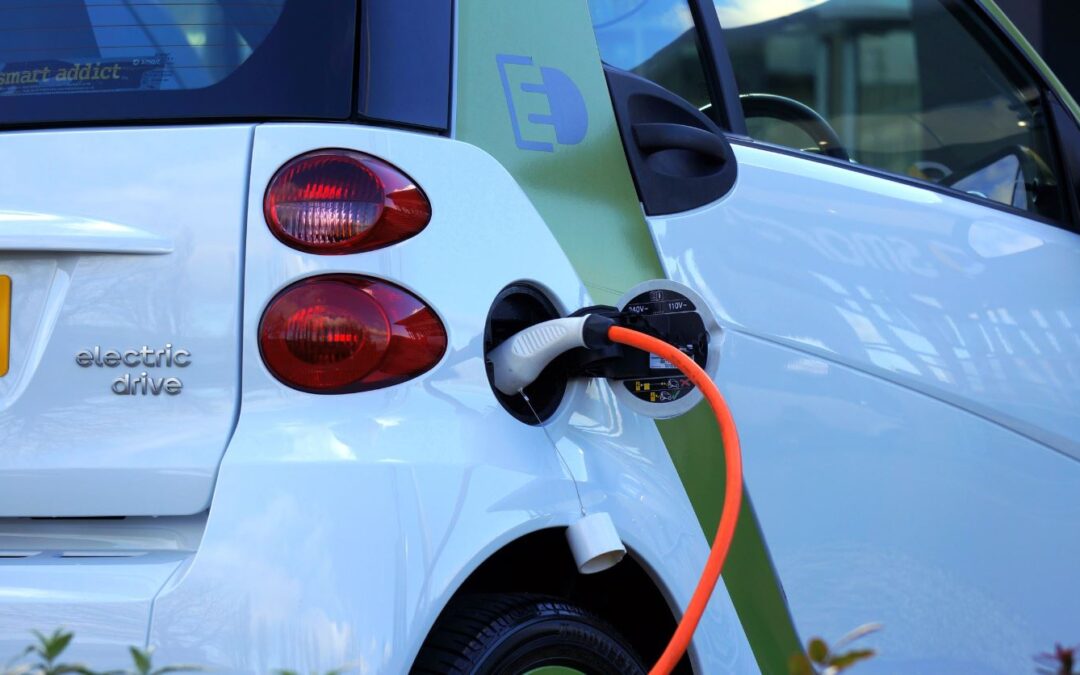Today, the transportation sector is the leading source of greenhouse gas emissions in the United States, as well as a significant emitter of nitrogen oxides, particulate matter, and other air toxins that contribute to negative health impacts and climate change. There are many solutions for reducing the emissions from this sector, including increasing access to public transit, bike lanes, and sidewalks. But in areas where these options are not available or feasible, electrifying the transportation sector is the most energy-efficient solution for passenger cars, transit, and freight.
All-electric vehicles (EVs) are powered solely by electricity. Based on energy inputs and outputs, EVs are three to four times more efficient than gasoline vehicles. EVs utilize more than three-fourths of the energy in electricity to power the vehicle, while conventional gasoline vehicles use less than a quarter of the energy in gasoline. Electricity is also produced domestically, reducing the need to import oil and saving the additional energy for transporting fuel.
EVs also have lower lifecycle emissions, better vehicle performance, and lower operational and maintenance costs. They often score highly on ACEEE’s annual GreenerCars ranking because of their energy efficiency and low lifecycle costs. One mile driven in an EV costs approximately one-third less than the same distance driven in a conventional gasoline vehicle.
Beyond the cost and resource savings and emissions reduction, EVs can play a pivotal role in making our electricity system more efficient and lowering overall energy costs. Electricity use is projected to increase by more than two-thirds through 2040, including more than half of the growth in the demand for electricity expected from residential, commercial, and public buildings. An increase in the number of EVs will put even more demand on the electricity grid.
However, as the number of EVs grows, they will offer multiple advantages to consumers, utilities, and communities. To ensure the most efficient and effective integration of EVs, utility companies should include EV load projections in planning and develop charging programs that will best utilize EVs as a resource.
In planning for load growth, EVs should be charged when electricity demand and costs are low. Specific electricity rates, such as a time-of-use rate, can incentivize drivers to charge at specific times and avoid charging at peak times. This helps avoid pressure on the grid particularly at high demand times, such as hot summer days, and keeps costs low for the customer and the utility.
EVs serve as a flexible resource and can be used as energy storage, provide additional protection to the grid in case of emergencies, and help support the increasing integration of renewable energy into the power system. Utilities can develop rates and managed charging programs that signal to customers when EV charging is optimal. Managed charging programs are not yet widely used, but the benefits of them increase significantly as more EVs enter the market. Integrating more EV infrastructure in buildings provides load flexibility and reduces the demand for generating electricity, lowering utility costs and customer rates.
The direct efficiency advantages of EVs paired with their capacity to better use the utility grid means improved public health, air quality, and economy. Learn more about EVs and their benefits from the Electric Power Research Institute.
Join us on Energy Efficiency Day on October 6, 2021, to celebrate energy efficiency. Sign up as a supporter or ask your elected officials to issue a proclamation.


Recent Comments